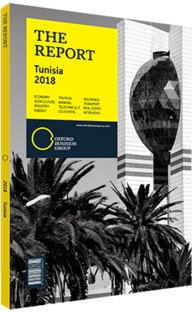Moncef Boussannouga Zammouri, Managing Partner, KPMG: Viewpoint

Viewpoint: Moncef Boussannouga Zammouri
Economists have argued for easing taxes as a means to accelerate economic growth. Despite the adoption of the euro as a common currency, eurozone countries have maintained their independence in terms of fiscal instruments, adapting taxes to their objectives of economic growth and social distribution. Small countries like Ireland, Malta, Luxembourg and the Netherlands have adopted relatively low tax rates to attract foreign investment, while others such as France and Scandinavian countries have adopted higher rates for income distribution. Even big countries have turned to fiscal instruments to ensure sustained production growth, with tax cuts adopted in the US and planned in France.
In Tunisia, the government has faced high expenses since the 2011 revolution following massive recruitment in the administration and increases in public salaries. This has led to an increase in taxation, with the introduction of the exceptional tax contribution in 2017 through an additional 7.5% tax on income. The 2018 Finance Law replaced this with additional taxes: an increase by one percentage point in value-added tax, one point on income and five points on dividends.
Measures like these negatively affect the private sector, which fears instability. The private sector understands budgetary pressures due to higher expenditure, but hopes that other solutions will be found such as an increase in non-fiscal revenue from privatisation and concessions, or the limitation of some expenditures.
Tunisia, a small country open to the outside world, needs a revival of local and foreign investments, which would be favoured by tax relief on production. The fiscal convergence demanded by the EU, expressed by the reduction of the differences between tax rates applied to onshore and offshore sectors, should also lead to a reduction in the average tax rate on businesses.
In 2018 a tax reduction was granted to small and medium-sized enterprises, from 25% to 20%, in the hope that this will be generalised to large companies previously subject to a 25% rate. A study by the OECD shows that Tunisia has high tax rates compared to other African countries. However, these do not apply to all sectors of the economy; small businesses are under a lump-sum system, export sectors were exempted and pay a 10% rate, and the informal sector avoids taxation.
Any rise in revenue should come from wider tax collection through coverage of the informal sector and small businesses. The rapid exit of Tunisia from the blacklist of tax havens established by the EU shows that the government is committed to continuing reform by accepting the principle of fiscal convergence of tax rates on local and export activities. Other simplifications, such as deductions, should be adopted to reconcile entrepreneurship with taxation. Tunisia should follow the example of small EU countries that have used fiscal leverage to attract foreign investment, achieve higher rates of economic growth and reduce unemployment. It will have to implement investment incentives adopted by the new legislation that came into effect in April 2017 with the adoption of two recent laws.
The first law includes incentives for regional development, promoting new sectors and technologies with bonuses worth up to one-third of the investment cost capped to the equivalent of €10m for projects of national interest. The second grants tax incentives for regional development and job creation: exemptions of five to 10 years depending on the location, followed by a reduced 10% rate without discrimination between local market and exports. This should attract investors to disadvantaged regions and ensure more inclusive development. Tunisia must work against money laundering and the financing of terrorism, and it must close the gap between offshore and onshore tax regimes to be excluded from lists of suspected countries. Financial and tax authorities have declared that such measures are under way. However, it’s recommended that the government openly communicate a long-term tax and financial strategy to make investors more comfortable in preparing their investment and development plans.
You have reached the limit of premium articles you can view for free.
Choose from the options below to purchase print or digital editions of our Reports. You can also purchase a website subscription giving you unlimited access to all of our Reports online for 12 months.
If you have already purchased this Report or have a website subscription, please login to continue.

